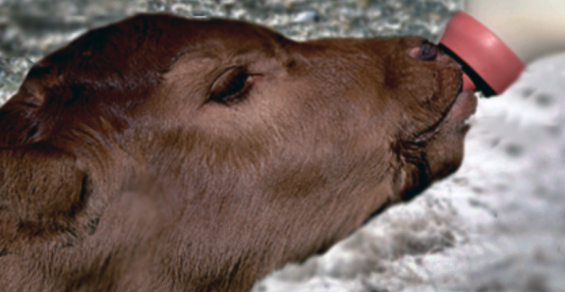Calving season is in full swing at our operation, and as such, it’s our responsibility as ranchers to ensure those newborn calves get that first shot of colostrum to give them the best start to life.
Most of the time, when a cow calves on her own, has a natural instinct to mother her calf and the newborn has the get-up-and-go to try to suck, everything goes smoothly. However, on the rare occasion where a cow needs assistance, the calf is slow to get up and moving or the dam is a poor-producing cow, that’s where colostrum supplementation may be necessary, either from another fresh lactating cow or as a product available on the shelf.
READ: Calving refresher + a checklist to help you prepare
According to Janna Kincheloe, South Dakota State University (SDSU) Extension research associate, the importance of colostrum should not be underestimated. She answers five common questions about colostrum.
1. What’s the big deal about colostrum anyway?
In a recent iGrow article, Kincheloe writes, “Colostrum contains over 90 compounds that fight against pathogens and establish immune response (immunoglobulins, lactoferrin, lactoperoxidase); provide nutrients (lactose, lipids, protein); and stimulate growth and generation of nerves, cartilage, bone, and muscle (essential fatty acids, minerals). Compared to mature bovine milk, colostrum contains higher total solids (27.6% vs. 12.3%), higher protein (14.9% vs. 2.8%), and slightly higher fat (6.7% vs. 4.4%).”
2. Which factors can cause a failure of passive transfer (FPT)?
FTP correlates to illnesses and diseases and can impact the calf from birth to finishing. These factors include the cow being in a feed energy-deficit diet, as well as temperature stress, dystocia, calving difficulty and lack of mothering or licking the calf dry after birth.
Kincheloe writes, “One of the most important functions of colostrum is to deliver immunoglobulins that transfer passive immunity to the calf and enable it to fight off infections for the first three to five weeks of life. This is accomplished by absorption of antibodies through the wall of the newborn’s small intestine.
“For maximum transfer of antibodies, the newborn must receive colostrum soon after birth. Antibody transfer becomes more limiting over the first 24 hours after birth as permeability of the newborn gut is reduced and the concentration of immunoglobulins in colostrum decreases.”
READ: Colostrum and calves — milk it for all its worth
3. How much colostrum is needed in the first 6-12 hours after birth?
If milking a cow for colostrum, Kincheloe says the general recommendations are to feed 5-6% of the calf’s body weight within the first six hours of birth, and the same amount again at 12 hours.
She says, “For a 90-pound calf, this amount would be approximately 2.5 quarts of colostrum per feeding. If possible, colostrum should be collected within 24 hours of calving and fed fresh. Alternatively, it can be frozen in one or two quart zip-top freezer bags or freezer-safe containers and used later. Correct thawing is important to prevent the proteins in colostrum from being denatured. Because microwaves often heat unevenly, the recommended method of thawing is to place the frozen bag or container of colostrum in warm water (110⁰F) and stir every five minutes. The colostrum should be warmed to 104o to 110⁰F.”
4. Are colostrum replacements or colostrum supplements the better choice?
Kincheloe says, “Both supplements and replacements are made from dried bovine colostrum or serum; however, colostrum supplements provide <100 g of IgG/dose and are formulated to be fed in conjunction with natural colostrum, while colostrum replacements contain more immunoglobulins (>100 g of IgG/dose) and also contain digestible proteins, vitamins, and minerals. Multiple researchers have reported acceptable levels of serum immunoglobulins in calves fed various replacer products; however, producers should carefully research products and choose one that has been proven to provide adequate immunity.”
READ: Here’s how to make $800 in four hours
5. What if the calf doesn’t get colostrum in the first 24 hours?
She says, “Colostrum-deprived calves are 50 to 75 times more likely to die within the first three weeks of life, most of them in the first week. FPT is usually determined by a test evaluating plasma IgG concentration within 24-48 hours after birth. The critical level used to indicate FPT in calves is less than 10 g/L.
“Products are classified by their ability to raise plasma IgG concentrations. Colostrum supplements do not raise the plasma concentration above the species standard of 10 g/L, while replacement products do. Research results indicate that calves fed replacer products perform similarly to those fed maternal colostrum in terms of IgG levels, health, and growth rates.”
Read more about the importance of colostrum and the benefits of various colostrum supplements and replacements by clicking here and here.
The opinions of Amanda Radke are not necessarily those of beefmagazine.com or Farm Progress.




Leave A Comment